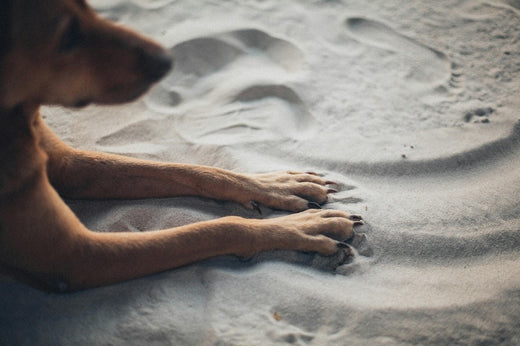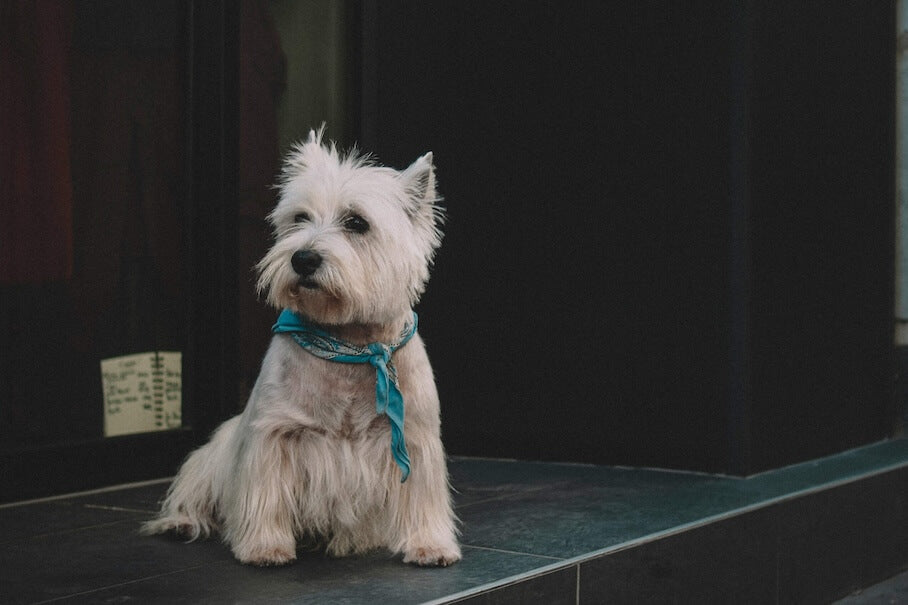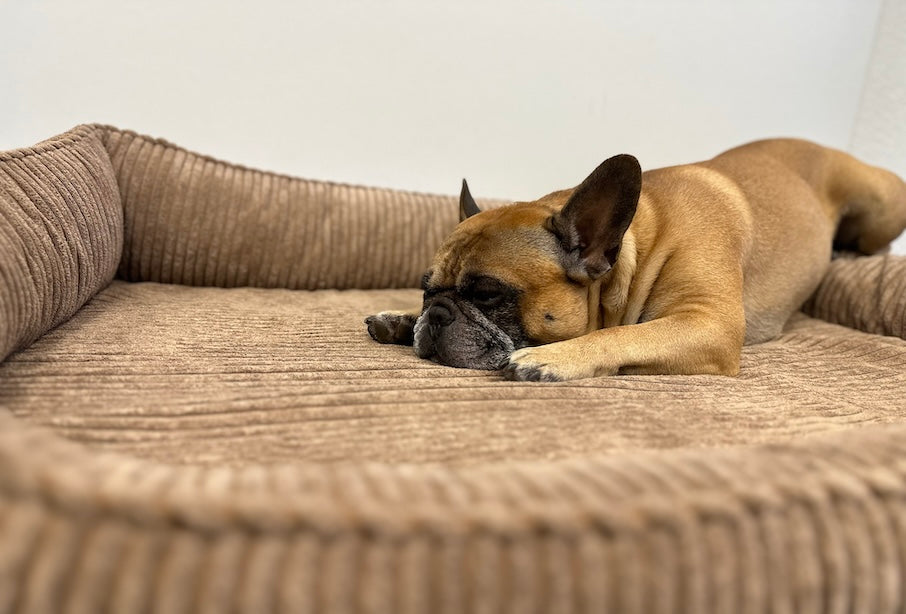Claw care is an important part of dog hygiene and contributes significantly to the health and well-being of your dog. Many dog owners ask themselves: How often should I cut my dog's claws? and How do I know when it's time for a trim? In this article, you'll learn how to optimally care for your dog's paws, how to cut the claws safely and what you can do if claw care becomes a challenge.
Why is nail trimming important?
Dog claws that are too long can cause pain, make walking difficult and even lead to injuries. Long claws put pressure on sensitive paws and change the natural position of the feet, which in turn puts strain on the joints and can lead to joint damage in the long term. Regularly trimming claws ensures that your dog can move in a healthy way and does not develop any unpleasant symptoms.
How often should I trim my dog's nails?
The frequency of nail trimming depends on several factors, such as the activity level, the surface on which the dog moves and the individual nail growth rate. As a general rule of thumb:
- Active dogs that walk a lot on hard surfaces (e.g. asphalt or concrete) often wear down their claws naturally and need to have their claws trimmed less often - about every 6 to 8 weeks.
- Dogs that spend most of their time indoors or walk on soft surfaces , such as grass or carpet, usually need nail trimming every 3 to 4 weeks, as their nails hardly wear down.
However, the exact interval depends on your dog's individual needs. Monitor the claw length regularly and adjust the cutting accordingly.
How to tell when your dog's claws are too long
A simple test will help determine if the nails are too long. Stand your dog on a flat surface and listen to see if his nails touch the ground or make noise when he walks. Nails that are too long will hit hard floors and cause the typical "clicking" sound. Ideally, the nails should be short enough that they do not touch the ground.
Other signs of claws that are too long:
- The dog shows discomfort when walking or limping
- The claws begin to curve inwards
- Red or irritated skin around the paw pads as the claws put pressure on the toes
Instructions for safely cutting dog claws
To trim your dog's nails safely, you need the right equipment and technique. Here are the key steps for pain-free and safe nail care:
Step 1: The right equipment
To trim nails, you will need a suitable nail clipper or nail grinder (especially for dogs who don't like being cut). Always use a tool that is appropriate for your dog's size. Small dogs will need smaller nail clippers, while larger dogs will need more robust scissors.
Step 2: The right technique and preparation
- Position your dog : Put him in a relaxed position where you can easily reach his paws.
- Trim claws carefully : Cut the claws bit by bit to avoid injury. Caution : The claws contain nerves and blood vessels (called "claws") that you do not want to injure. Therefore, only cut off the outer, white or transparent tip.
- Use a nail grinder : If you use a nail grinder instead of scissors, file the nails in small steps and make sure not to hold the grinder in one place for too long as it can get hot.
Step 3: Praise and reward
Dogs respond positively to rewards. Praise your dog after each successful grooming session and give him a treat. This way he will associate nail care with something positive and cutting will be easier the next time.
What to do if cutting claws becomes difficult?
Many dogs are nervous or anxious about having their nails trimmed. Patience and positive reinforcement help reduce fear. Here are a few tips:
- Get your dog used to paw care slowly : touch his paws regularly and reward him for it.
- Short grooming sessions : Trim only one or two claws at a time and then take a break to avoid stress.
- Visit a veterinarian or groomer : If your dog simply refuses to be cut or you are unsure, it is a good idea to call in a professional.
Tips for care between trimming appointments
Between nail trimming sessions, you can check your dog's paws regularly for injuries or dirt. Dogs that walk outside a lot may have small stones or dirt particles between their pads, which can be easily removed with a damp cloth. Keep the paws clean and care for them with a gentle paw ointment to protect the pads from cracking and drying out.
CONCLUSION: Regular claw care for a healthy dog life
Claw care is an important aspect of dog hygiene and should not be neglected. By trimming the claws regularly, you also promote joint health, improve well-being and prevent long-term problems. Observe how often your dog needs its claws trimmed and adjust the care intervals individually. With the right technique and a little patience, claw trimming becomes a routine part of dog care that ensures more comfort and quality of life for your dog.





Leave a comment
All comments are moderated before being published.
This site is protected by hCaptcha and the hCaptcha Privacy Policy and Terms of Service apply.